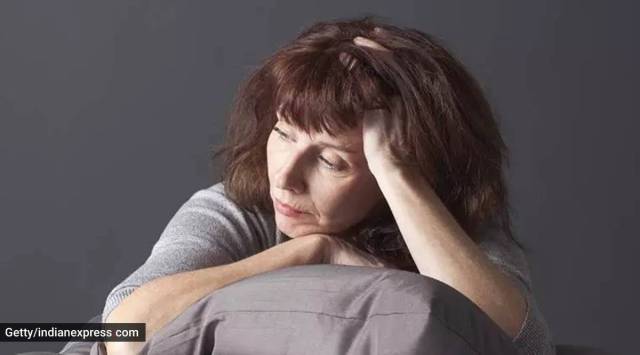- India
- International
How to manage bone health during menopause
A woman’s body achieves its peak bone mass between the ages of 25 and 30. This means that her skeleton stops growing and is at its thickest and strongest during this time. Now, if a woman’s peak bone health is less than ideal, the chances of her contracting bone complications in later years increase, says Dr Yash Gulati, Senior Consultant, Orthopaedics and Joint Replacement, Indraprashtha Apollo Hospital, New Delhi
 A woman’s body achieves its peak bone mass between the ages of 25 and 30. This means that her skeleton stops growing and is at its thickest and strongest during this time (Gettyimages/IndianExpress)
A woman’s body achieves its peak bone mass between the ages of 25 and 30. This means that her skeleton stops growing and is at its thickest and strongest during this time (Gettyimages/IndianExpress)Menopause is a universal phenomenon experienced by middling women everywhere except that the associated symptoms differ from person to person. While some might feel relieved and happy as they don’t have to go through menstrual pains and the extra care required every month, for others, menopause might bring hot flashes, insomnia, mood swings and hormonal imbalance.
In some cases, menopause affects the bone and cardiac health of women. The figures collected by the International Osteoporosis Foundation show that one out of every three women above the age of 60 will experience at least one fracture caused due to osteoporosis. During peri-menopause, women’s bodies start reacting to their surroundings differently. They become more vulnerable and the chances of them contracting diseases like arthritis, joint pain and osteoporosis in the post menopausal phase increase manifold. The reason is a reduced level of estrogen production post-menopause. The hormone, produced in women by her ovaries, plays a key role in deciding her bone health.
A woman’s body achieves its peak bone mass between the ages of 25 and 30. This means that her skeleton stops growing and is at its thickest and strongest during this time. Now, if a woman’s peak bone health is less than what is considered ideal, the chances of her contracting bone weakness — osteopenia or osteoporosis — and related complications in later years increase.
Research indicates that up to 20 per cent of bone loss can happen during these stages and approximately 1 in 10 women over the age of 60 are affected by osteoporosis worldwide.
The bones become brittle and weak, which increase the risks of fracture, bone and muscle pain. While menopausal arthritis can be caused due to genetically inherited abnormal genes reacting to the metabolism of estrogen present in the body, reduced levels of bone density can also cause joint pain that can affect the knees, shoulders, neck, elbows and other joints in the body.

Post-menopause, the chances of contracting primary osteoporosis are very high. This basically translates to decreased density and increased hollowness in the bone. Osteoporosis causes increased fragility of bones and can lead to fractures with little or no injury called “fragility fractures.” This is common in the hip, wrist and spine areas.
Peri-menopausal osteoporosis and associated muscle wasting (sarcopenia) can have adverse effects on the daily lives of the person affected, causing hindrance in basic movements, constant body pain and susceptibility to injuries.
Peri-menopausal osteoporosis should be diagnosed and treated early to prevent complications. Simple, specific low-cost drugs are available for managing the condition. As the bones also start losing minerals and vitamins, it is suggested to maintain a good daily intake of the same. The daily diet should include at least 1300 mg of calcium. This can be achieved through the intake of a variety of dairy products, soy, almonds, tofu, green leafy vegetables and meats. Paired with calcium intake, and the body’s capacity to absorb, maintaining good Vitamin D levels helps achieve good bone health. The easiest way to do so is daily exposure to early morning sunlight and supplements.
Do engage in some kind of physical activity, which includes weight bearing. Regular resistance training is the most effective way to gain strong bones and muscles.
Some of the habits to avoid risking bone diseases are decreasing alcohol intake, avoiding smoking and reduction in excessive caffeine intake. These are some of the daily lifestyle changes women can adopt to achieve a less problematic menopausal lifestyle.
Apr 25: Latest News
- 01
- 02
- 03
- 04
- 05


























